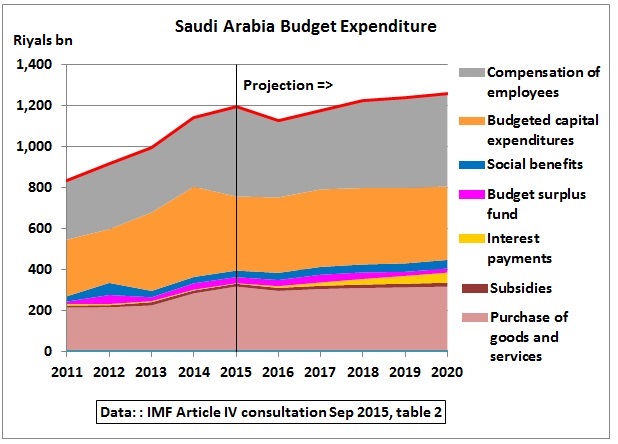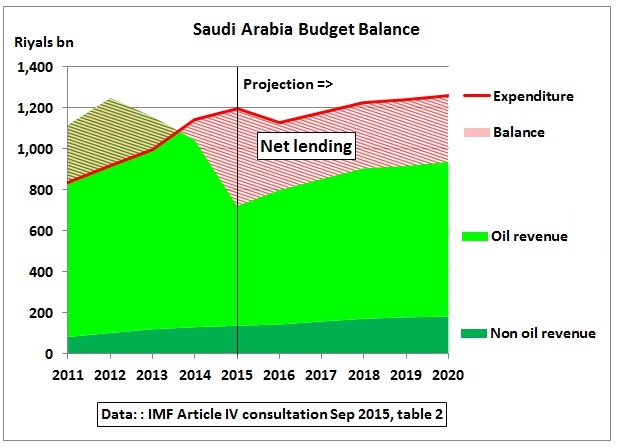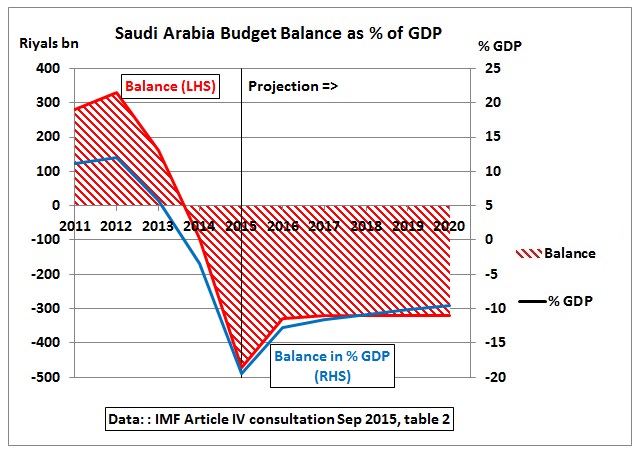Saudi Arabia’s fiscal break-even oil price to be around $US 100 mark for the foreseeable future
The latest IMF Article IV consultation report on Saudi Arabia was published on 9 September 2015.
http://www.imf.org/external/country/sau/
Extract: Government spending has increased substantially in recent years. Consequently, the breakeven oil price rose to $106 a barrel in 2014 from $69 a barrel in 2010. As a result, with the large decline in oil prices, the fiscal deficit has increased sharply and is likely to remain high over the medium-term. These deficits will rapidly erode the fiscal buffers (in the form of government deposits and low public debt) that have been built over the past decade. http://www.imf.org/external/pubs/ft/scr/2015/cr15251.pdf
Let’s put this into some graphs. We start with the fiscal deficit first, then look at the external balance.
Expenditure
Fig1: Expenditure, Budgetary Central Government Operations
During the period of high oil prices until 2014, expenditure grew by 9-15% pa. In early 2015, King Salman disbursed a bonus of 50 bn Riyal to government employees, contributing to a 30% increase of the annual wage bill. Capital expenditure (transportation, health and education) includes the expansion works at Medina and Mecca.
Budget Balance
Fig 2: Budget revenue vs expenditure
Oil revenue dropped sharply, starting in 2013 and leading to a negative balance by 2014. It will get worse in 2015. It is clear that the pre 2015 trend cannot continue. The IMF proposes a budget adjustment scenario (ii, Fig 7) by initially reducing expenditure in 2016 and then increasing it moderately by 4% and later 1%. Oil revenue is assumed to grow along a recovery of oil prices.
Fig 3: Budget balance as % of GDP
In Fig 3, we take the balance from Fig 2 and add a curve (blue) as percentage of GDP. In 2015, the deficit reaches 20% of GDP. For comparison: commodity dependent Australia had a budget deficit of -2.6% of GDP in 2014/15, the US estimate for 2015 is -2.7%.
Oil price assumptions
The underlying oil prices have been taken from the World Economic Outlook (WEO), assumed as follows: 
Fig 4: Oil price assumptions and Saudi budget balance
…click on the above link to read the rest of the article…


